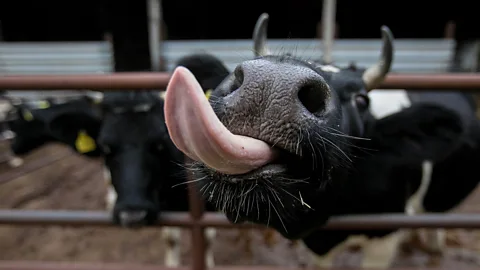How New Zealand is reducing methane emissions from farming
 Getty Images
Getty ImagesNew Zealand is home to 10 million cows and 26 million sheep. To reach its climate goals, the country must curb potent methane emissions from animal farming, using science and policy.
The young bull's head disappears into a plastic green hood. He scoops up a mouthful of dried pellets, chews, flicks his ears, and exhales. The hood is attached to a contraption on wheels that looks a bit like a high-tech mobile pizza oven.
But the only thing cooking up here is a precise measurement of methane, a highly potent gas that has a global warming impact 84 times higher than carbon dioxide (CO2) over a 20-year period.
The bull's breath, laced with gas from his digestive tract, is hoovered up by a fan at 40 litres (8.8 gallons) per second, and measured in this device known as a GreenFeed system.
Over a few minutes of snacking, the bull's burps and breaths are analysed to build a picture of just how much methane his digestive system is churning out. Lorna McNaughton, senior scientist at agri-tech cooperative Livestock Improvement Corporation (LIC) in New Zealand, scrutinises the data on a computer monitor. Some bulls produce more methane, some less.
The bulls, aged between six and 15 months, are "like teenagers, getting up to all sorts of mischief", says McNaughton. They're enticed into the GreenFeed contraption six times a day with a tasty snack of Lucerne hay cubes: "lollies they get for doing the work," she says. Their barn stay lasts around 40 days, so researchers can closely monitor food intake and weight gain alongside burps.
Since 2021, LIC and another cattle breeding cooperative, CRV Ambreed, have ed forces to measure the methane of 800 young bulls and counting. It's the first step in breeding dairy cows that naturally produce less methane – one way New Zealand is hoping to curtail emissions of this potent, short-lived greenhouse gas.
